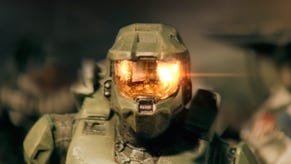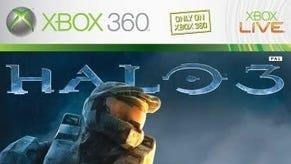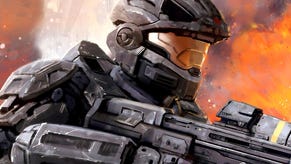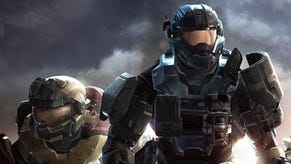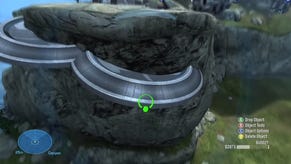Tech Analysis: Halo: Reach
Noble.
But perhaps the most impressive improvement is through the use of alpha. Transparent textures can sap performance, but Bungie uses an insane level of them regardless, and at full resolution to boot - regular DF readers will know that quarter-res alpha buffers are an easy performance win used by many developers. Bungie goes for the full effect regardless: the rain pours, waterfalls explode with thousands of particles and the whole environment is bathed in an atmospheric haze.
All this takes its toll on fill-rate and on occasion the engine can't keep up, especially when a big bunch of explosions kick off. However, for the vast majority of the duration it does, and the results are a colossal leap visually over what we saw in the Halo 3 engine.
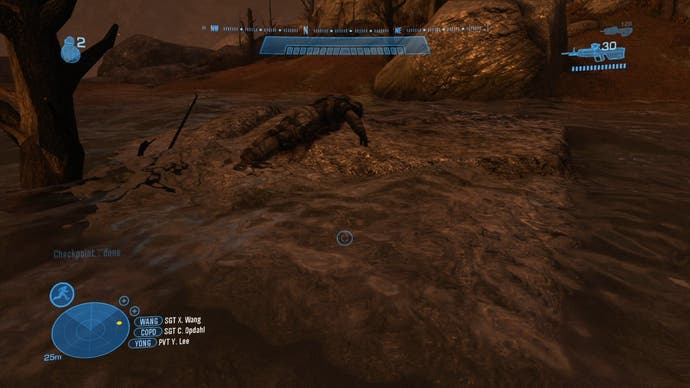
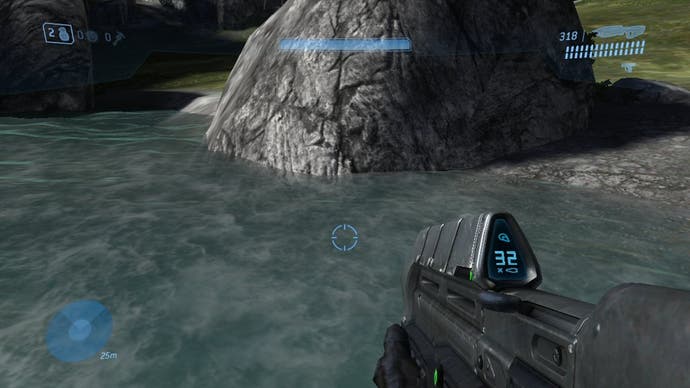
Making stuff explode and generally blowing things up is one of the most satisfying elements to a shooter, and Bungie doesn't skimp in this regard. A cheap performance boost developers sometimes employ is to make explosions opaque, eliminating the hit that using alpha incurs by making the conflagrations non-transparent (the original Uncharted: Drake's Fortune on PS3 is a pretty classic example of this).
A quick journey into the Theater mode shows that Bungie not only retains the use of alpha but layers several alpha textures to create even more explosive bangs. It seems that the developer particularly enjoys paying off the player when larger enemy units are brought to a fiery end. A new inclusion to the game (actually added at the end of development to the dismay of the engineers involved) is the target locater - an innocuous little device that marks an area of terrain for an intensive orbital bombardment. Again, alpha heavy, but an extremely cool addition to the Halo arsenal.
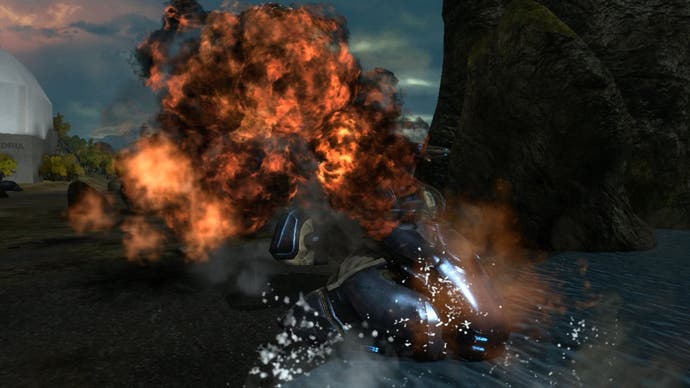

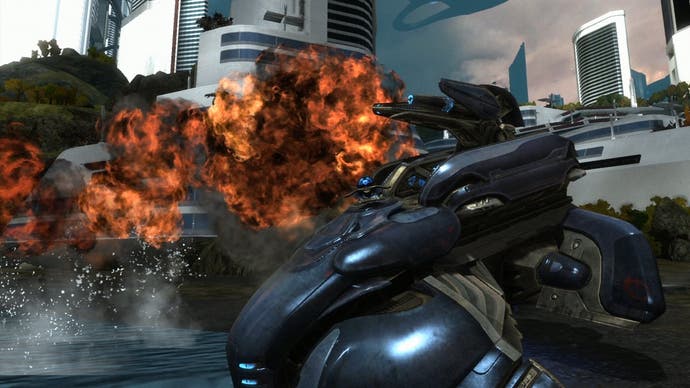
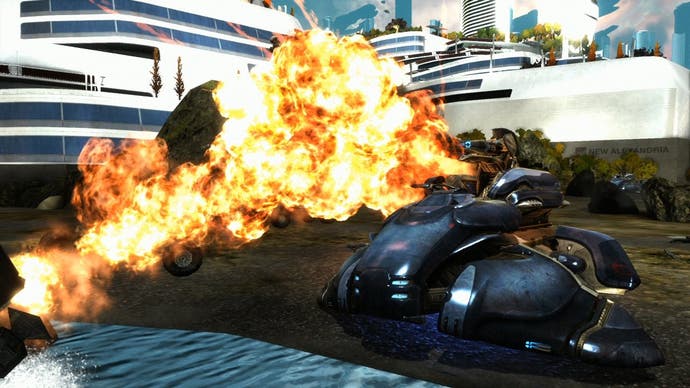
The improvements to the Halo 3 engine are substantial, to the point where Bungie says that the vast majority of the rendering systems have been rewritten from scratch. The result is a game that still looks like a Halo title, but when put to the test in terms of basic graphical comparisons, wipes the floor with its predecessors.
We've talked already about the huge improvement in draw distance, but how does that actually compare visually? After all, one of the strengths of the Halo games in general has been the size and scale of the maps. Here are a couple of comparisons - a long-range Halo 3 landscape up against a Reach equivalent, along with the inclusion of an ODST cityscape up against the Falcon section we see later on in the new game's campaign.
The Halo 3 shot undoubtedly emphasises that size and scale in the terrain was pretty impressive for the older tech, but actual detail resolved at distance was minimal compared to the effect we see in Reach. Combined with the lack of atmospherics, the overall look is clearly a generation behind. The ODST shot reveals that while the city itself is quite large, the scale of the overall level is something of an optical illusion, as those skyscrapers are not apparently part of the play area.
And once again, the atmospheric particles in Reach really are rather special. Play the level, quit out to the Theater mode and see how this level looks in free camera mode...
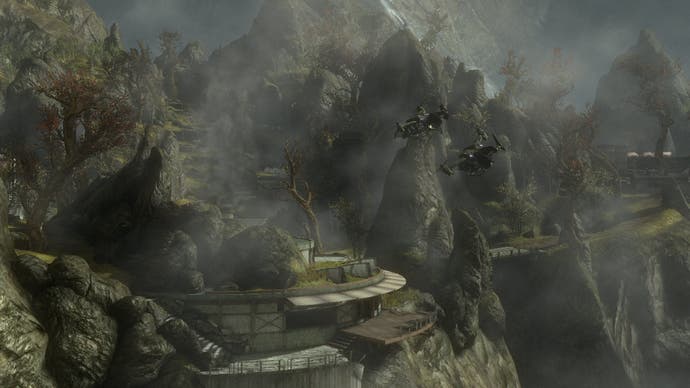
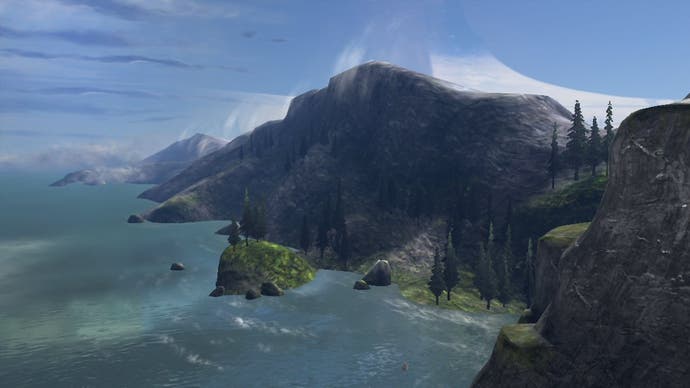
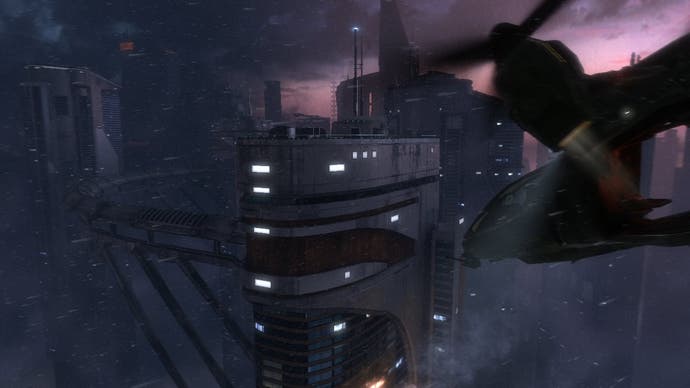
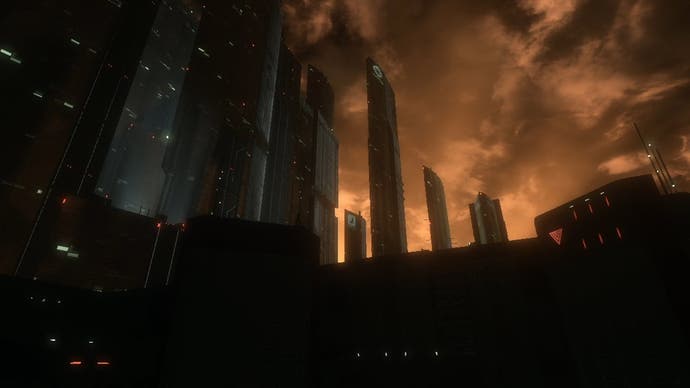
Interestingly, the enormous draw distance doesn't seem to unduly affect performance. This is something we can measure quite easily in a gameplay environment as Reach features a number of what Bungie calls "rail-ride" levels, where you man a cannon inside a Falcon and fly across hostile territory, blowing the crap out of the Covenant forces in your path, often providing air support to human remnants fighting for their lives on the ground.
We still see a fairly consistent 30FPS, but similar to the terra firma experience, there is the occasional splutter down to 20FPS during these sections. An interesting piece of trivia about these rail-ride levels is that you can play them in different ways, depending on which side of the Falcon you board, and yes, four-player co-op is still supported too - as it is in the night-time skyscraping Falcon section of the game later on in the campaign.
If all of these enhancements to the basic engine are not enough, it's also worth pointing out that overall quality of the 3D models in the game has also improved substantially. The poly count has increased, while the quality of the materials and the texture work has also received a welcome boost. Combined with the superior dynamic lighting system and the sheer amount of active light sources the game processes, Reach has a more refined, realistic look to the Spartans, the vehicles and of course the hordes of Covenant.
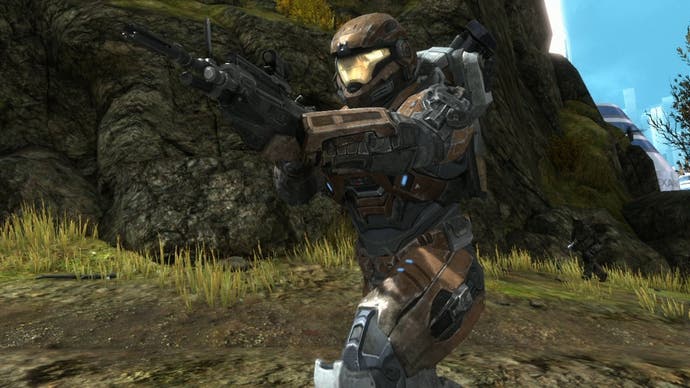
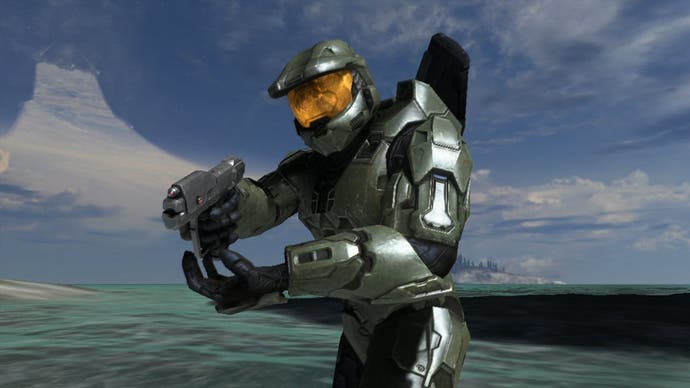
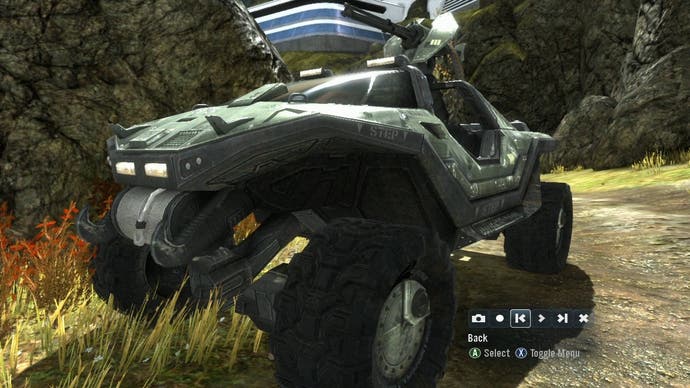

There have clearly been many improvements from the multiplayer beta we looked at several months ago, but let's target our number one issue with the earlier code: temporal anti-aliasing. Halo 3 and ODST didn't feature any anti-aliasing at all, resulting in some pretty ugly edges, especially in high-contrast areas. Bungie's solution with Reach is to blend elements from the previous frame into the present one with a slight off-set, producing a very smooth look.




